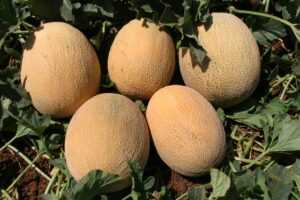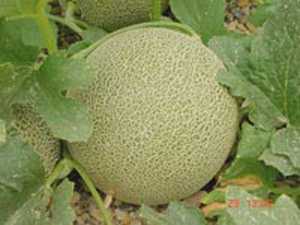Last week we billed your cards for purchases made over the month of June. You may view your billing history in our Internet-based order system. It’s easy. Simply click the tab “דוח הזמנות ותשלומים” where the history of your payments and purchases is clearly displayed. Please make sure the bill is correct, or let us know of any necessary revisions. At the bottom of the bill, the words סה”כ לתשלום: 0 (total due: 0) should appear. If there is any number other than zero, this means we were unable to bill your card and would appreciate your contacting us. We always have our hands full, and we depend on you to inform us. Our thanks!
Reminder: The billing is two-part: one bill for vegetables & fruits you purchased over the past month (the produce that does not include VAT. The title of that bill is “תוצרת אורגנית”, organic produce). The second part is the bill for delivery and other purchases. (This bill does include VAT. The title of the bill is “delivery and other products.”)
____________________________
 Manu of Taoz, our bread baker par excellence, is expanding her wide assortment of organic rye bread loaves. You may now order wheat, rye or three types of flour with seeds loaves. From my experience, these new additions make Manu’s already-excellent product range even better. Go for it!
Manu of Taoz, our bread baker par excellence, is expanding her wide assortment of organic rye bread loaves. You may now order wheat, rye or three types of flour with seeds loaves. From my experience, these new additions make Manu’s already-excellent product range even better. Go for it!
The prices of the loaves and Manu’s other pastries (of which there are many) are detailed in our order system, and you can add them to your order. If you haven’t yet taken a look at the order system, now is the time!
Bon Appetite!
__________________________
Our Melons, Ourselves
I decided to write a newsletter full of sweetness and summertime, and about the fruit so delicious that it makes enduring these hot summer days worthwhile. This week, we turn our salute to the dear, dear melons.
While we at Chubeza maintain the identity of veggie farmers, working the land and growing vegetables, there was a moment or two when we considered planting a small fruit orchard. In the end, we decided to stick with those crops that grow close to the earth, and leave the fruit department to Helaf of Melo Hatene Orchards. And yet, we are very pleased to claim the glory of a couple of fruits that have become regulars in our summer boxes, because they grow calmly spread across the open field, not on a tree or bush. They are, of course, the melon and watermelon. Last week we shared the intriguing tale of the watermelon, and this week we’re pleased to introduce you to his smaller, softer brother.
Both melon and watermelon belong to the Cucurbitaceae family, a prominent summer clan whose relatives include the squash and pumpkin, cucumbers and fakus. The latter, though it pretends to be a cucumber, is really a melon harvested before it had time to ripen (and to all of you who still think we’re sending you two bags of squash, kindly take a second look at the recent fakus Newsletter of several weeks ago). It’s good that we harvested the fakus at this time, for unlike his melons brothers, he will not get sweeter as he ages. But the melons will! As they advance towards ripening, the level of sugar in the fruit grows. At that point, they become desirable not only to us, but unfortunately also to the birds, who are very good at detecting a ripe and juicy melon and determined to nibble their portion as well.
We attempt to get the melons into the field as early as possible. Some are seeded; others are planted to gain more time and fewer weeds. We seed and plant the first round of melons in March, right after their relatives the cucumber, fakus, pumpkin and squash, and together with the winter squash. There will, of course, be more rounds, so that we can harvest this sweetness for a good while.
In the beginning of the melon’s life, we cover its bed with a thin, white cloth called “agril,” allowing the plant to serenely grow, protecting it from viruses and other insect-borne diseases. Once the plant begins blossoming, we remove the white veil and allow the bashful bride to confront the outside world. Despite the many dangers, there is also the anticipated rendezvous with pollinating insects, without which we would have no pollination, fertilization or sweet fruit.
It takes the first melons slightly less than two months to begin winking at us from their beds in their roly-poly way. Several weeks later, they begin changing their colors, softening a little inside, filling up with sweet juice and becoming easily detached from their plant. Melons begin ripening some 30 days after they blossom, when the sugar levels and pH are on the rise. The sugars that make up the mass of the fruit are fructose, glucose and sucrose, accompanied by 90% water. We strive to harvest them at the prime of their ripeness, after their sugar level has reached its peak and they are sweet and juicy. Prematurely-picked melons will become juicier and softer in time, but they will not be as yummy and sweet. Melons have no reserve of carbohydrates. Actually, most of the carbs within them are sugars, not starch, which is why they have nothing to convert into sugar if they are harvested. What you pick is what there is.
And thus, over the years various methods to determine the ripeness of the fruit have been developed. Some ways are more scientific, such as the refractometer, a tool that measures the levels of sugar and NMRI (Nuclear Magnetic Resonance Imaging.) But we plain farmers simply bend down and inhale (mmm… it smells like a ripe fruit), take a close look (and the color has changed from green to yellow), caress it (press on the base of the fruit, where the flower once grew) and give it a little tug (if it comes off easily, great. If not, it needs some more time). We then carefully roll the melon to the long piles at the side of the bed. Later we stroll through with our wheelbarrow to collect the melons to the end of the bed, where we will place them into low boxes (they do not like sitting in piles) and bring them to the packing house to savor their intoxicating scents.
For some years now we have been growing two types of melons, both local Israeli-developed: the Ananas (pineapple) melon is the long elliptical one with the orange interior, and the Galia melon is the round one with the green interior. Each has at least two varieties, one which ripens early and is suitable for the beginning of the season, and another that ripens later, for the end of the season. So now, of course, we are harvesting the more gregarious ones, the early bloomers. The later ones were seeded and planted even in May, which is why they may only ripen in July.
The Ananas Melon

Galia Melon

Melon history begins in Africa, where there are still many varieties of wild melons. It is unknown when, where and how they were cultivated, but somehow the farmers of an ancient era selected and saved the seeds of the sweetest melons. They were abundant in Egypt over 4000 years ago, and after many epochs travelled on commercial routes to Turkey, Iran, Afghanistan, India, South-Central Russia, China and Japan. They are depicted in ancient art, including a 2,400-year-old Egyptian burial drawing. In the Gilgamesh Epic written over 2000 years ago, Gilgamesh is mentioned eating aromatic melons. The fruit arrived to Europe sometime around the Greek and Roman period. The Moors brought them from North Africa to Spain during their reign there. Here in Israel, melon is mentioned in the Mishna under the name melafefon (cucumber)… Melons back then were very small compared to today’s varieties, probably about the size of an orange.
Different cultures feast on melons in different ways: in the Far East they are cooked and eaten like other cooked vegetables, but these are a different variety than the sweet melons we know. One of the Oriental types is the Chukiang melon, grown from Thailand to South China. This type of melon is pickled and preserved for months. In the Middle East, Central and South America, and China, their dried seeds are eaten as a snack. In Mexico, a refreshing, melon cooler called agua fresca is a popular summer drink. In Japan, they make a different drink called midouri, a very sweet and heavy melon liquor, produced by soaking the melons in alcohol for a month (!). Even in our familiar way of eating the melon raw, there are many variations in seasoning: salt, pepper, ginger powder or lemon juice.
Alchemists of the Middle Ages claimed that melon encourages blood circulation, and is suitable for soothing heated tempers. It is said to ease the pain of kidney stones and clear the way for their discharge. In Chinese medicine, melon is considered a cold food which influences the heart and stomach, encouraging urination, easing constipation, helping fight liver diseases, easing a cough, lowering body temperature and quenching thirst. It is highly recommended to eat melon separately, as its own little meal.
From a nutritional viewpoint, melon is rich in Vitamin C. Half a melon contains 117 mg, almost twice the recommended daily consumption. It is also rich in Vitamin A and beta carotene, both of which are antioxidants that help the cells protect themselves against harmful free radicals. In addition, half a melon contains 853 mg of potassium (almost double the amount of a banana), which is helpful in reducing blood pressure and easing muscle pain.
Storing a Melon:
Let it sit at room temperature for two to four days, till soft enough to eat.
Then chill before devouring.
A ripe melon will keep in your fridge for approximately two weeks.
Melons are sensitive to ethylene which is emitted from ripe fruit, and can go bad if exposed to nearby fruit. If you have melons you wish to store for a time, place them in an open space and only store the softer ones. Do not store them near apples!
Wishing us all a sweet, delicious, fresh and juicy week!
Alon, Bat Ami, Dror, Yochai and the Chubeza team
___________________________________
WHAT’S JOINING THE MELON IN THIS WEEK’S BOXES?
Monday: Eggplant, scallions/onions/garlic chives, New Zealand spinach/Swiss chard, cherry tomatoes/beans/Thai beans, tomatoes, Japanese pumpkin/kabocha squash, corn, watermelon/melon, cucumbers/fakus, parsley/coriander. Special gift: nana (mint). Small boxes only: butternut squash /pumpkin.
Large box, in addition: Potatoes, parsley root, lettuce, zucchini
Wednesday: scallions/onions/garlic chives, New Zealand spinach/Swiss chard/lettuce, cherry tomatoes/zucchini, tomatoes, Japanese pumpkin/kabocha squash/acorn squash, okra/melon, cucumbers/fakus, parsley/coriander, butternut squash /pumpkin, parsley root. Special gift: nana (mint). Small boxes: eggplants/potatoes.
Large box, in addition: corn/watermelon, beans/Thai beans, potatoes and eggplants.
And there’s more! You can add to your basket a wide, delectable range of additional products from fine small producers: flour, fruits, honey, dates, almonds, garbanzo beans, crackers, probiotic foods, dried fruits and leathers, olive oil, bakery products and goat dairy too! You can learn more about each producer on the Chubeza website. On our order system there’s a detailed listing of the products and their cost, you can make an order online now!
